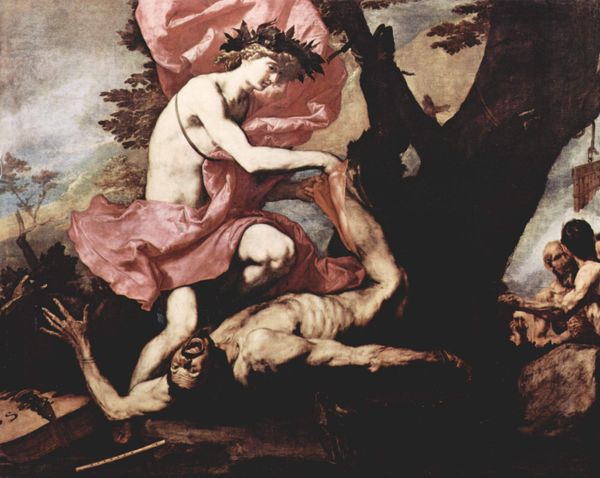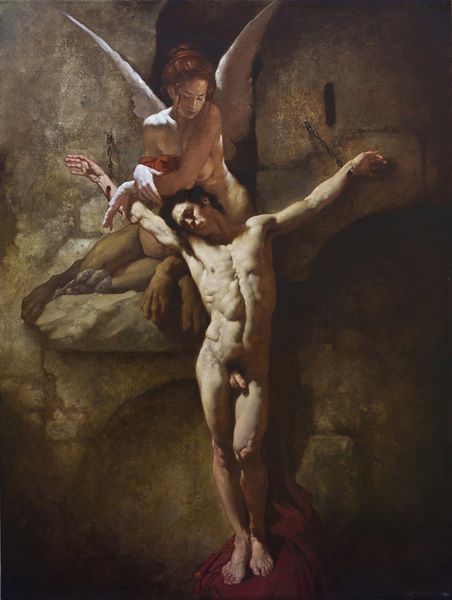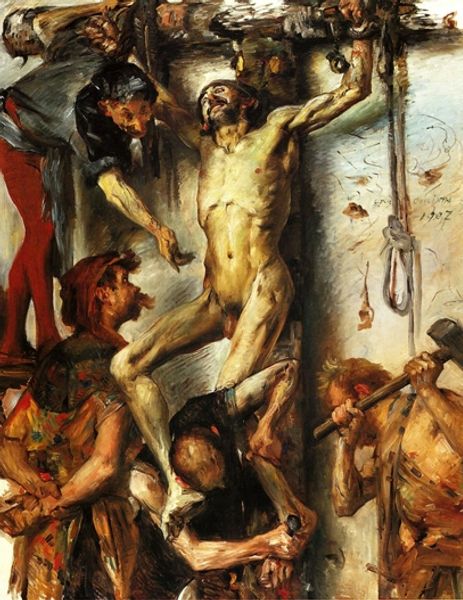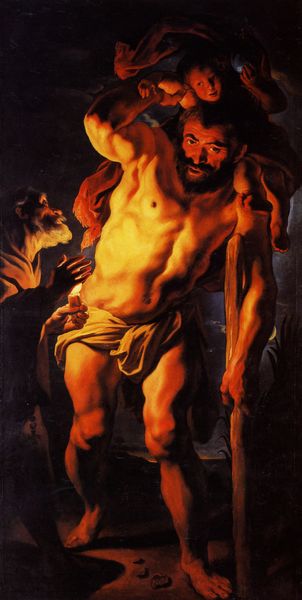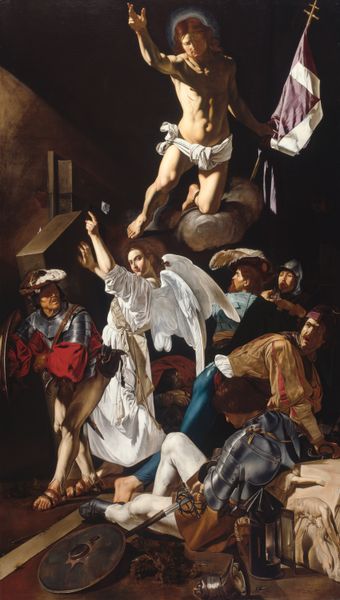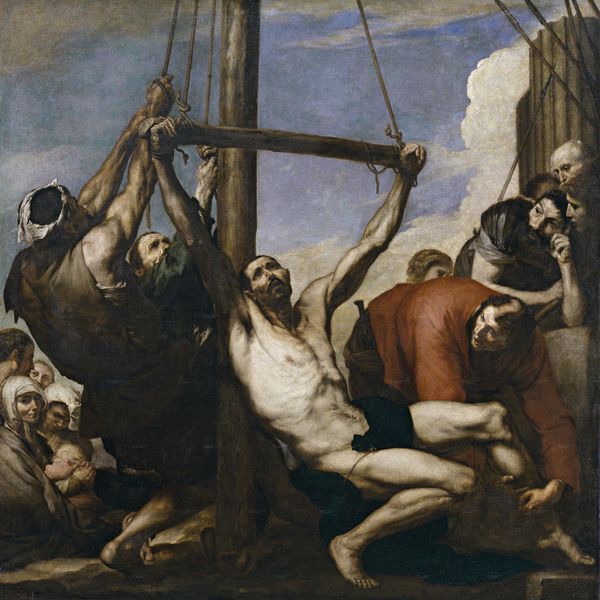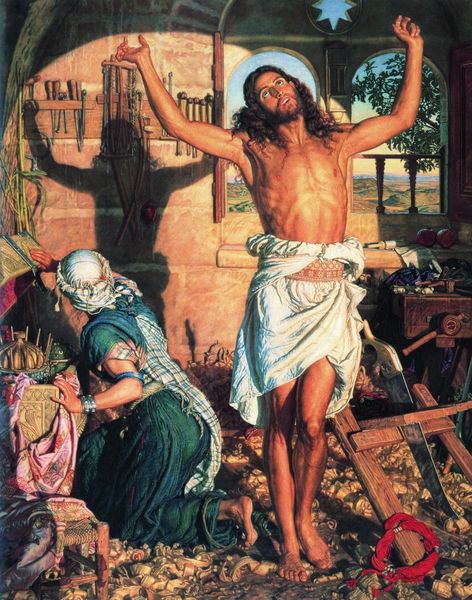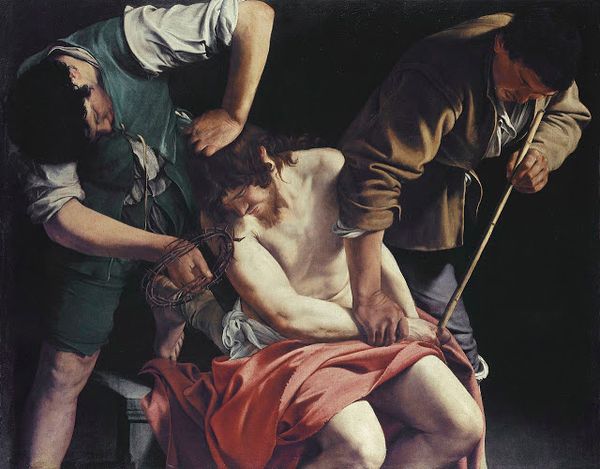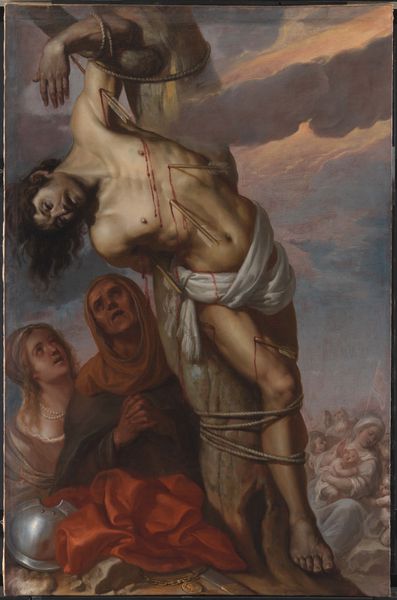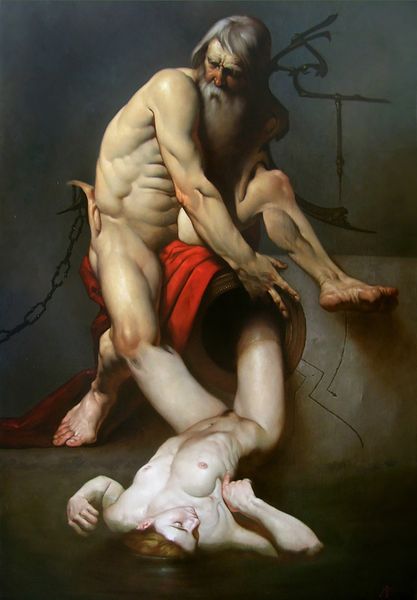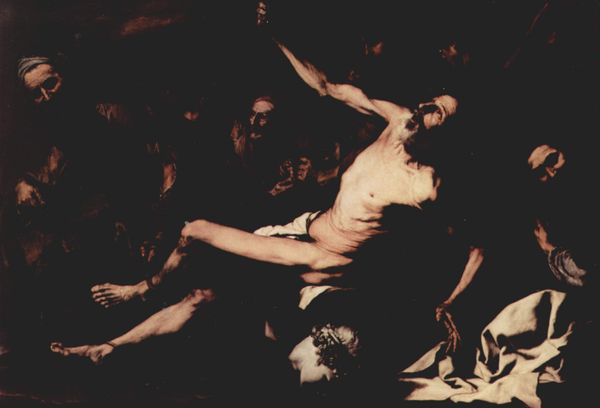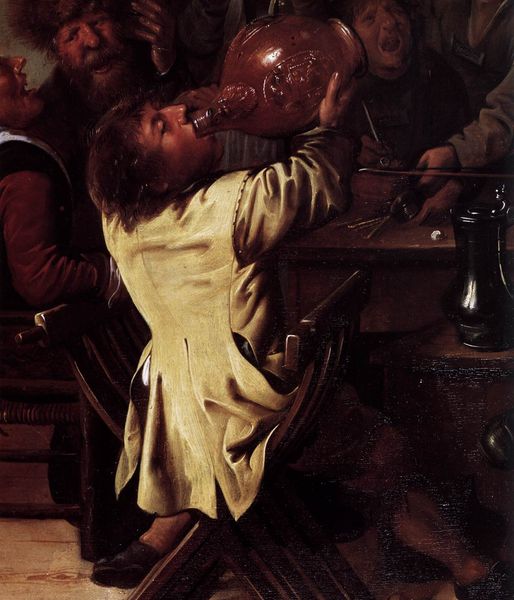
Dimensions: 270 x 165 cm
Copyright: Public domain
Curator: This is "Tiradentes Esquartejado" by Pedro Américo, completed in 1893. What’s your immediate take? Editor: It's gruesome, almost clinically so, yet rendered with this unsettlingly soft, academic brushstroke. There’s something inherently theatrical about the scene; I'm immediately struck by this odd stillness amid such graphic violence. It's like a stage play frozen at its climax. Curator: Américo really leaned into the theatrical. He uses dramatic lighting and idealized anatomy, hallmarks of academic painting, to depict the aftermath of Tiradentes' execution. But knowing Tiradentes, this romantic hero mythologizing must have felt… off. Editor: Exactly! And thinking about the context... Tiradentes, the leader of the Inconfidência Mineira, a late 18th-century independence movement in Brazil... His brutal execution was meant to be a deterrent, a public display of power. Yet here, Américo paints him as a Christ-like figure, deliberately echoing religious martyrdom. What is up with the crucifix beside him? It seems kind of manipulative! Curator: You’ve got it! It's pure manipulation, a potent image crafted to stir patriotic fervor and recast a failed revolutionary as a national saint. That classical positioning, the almost beatific expression… It's not about historical accuracy but about crafting a powerful symbol for the newly formed republic. Did you know this was painted almost a century after his death? It's nation-building through visual storytelling! Editor: And there’s a darkness there too. The visceral details of dismemberment…it’s difficult to reconcile it with that sense of serene idealism that echoes in neoclassical artwork! He becomes both a warning and a beacon – all in this terribly elegant oil paint. Considering the racial politics of Brazil then and now, that idealized, European portrayal complicates things further, doesn't it? Curator: Absolutely. By idealizing Tiradentes’ features, Américo not only elevated him to a Christ-like status, as we mentioned before, but also effectively erased any trace of his racial identity, making him palatable and relatable to a wider, predominantly white, Brazilian audience. It’s this powerful work because it touches so many aspects, both positive and so terrible, about Brazilian History. Editor: Yes, the painting does make one pause and reflect on the way we construct narratives around historical events. The painting speaks volumes. Curator: Agreed, it's definitely a striking piece that makes you think.
Comments
No comments
Be the first to comment and join the conversation on the ultimate creative platform.
